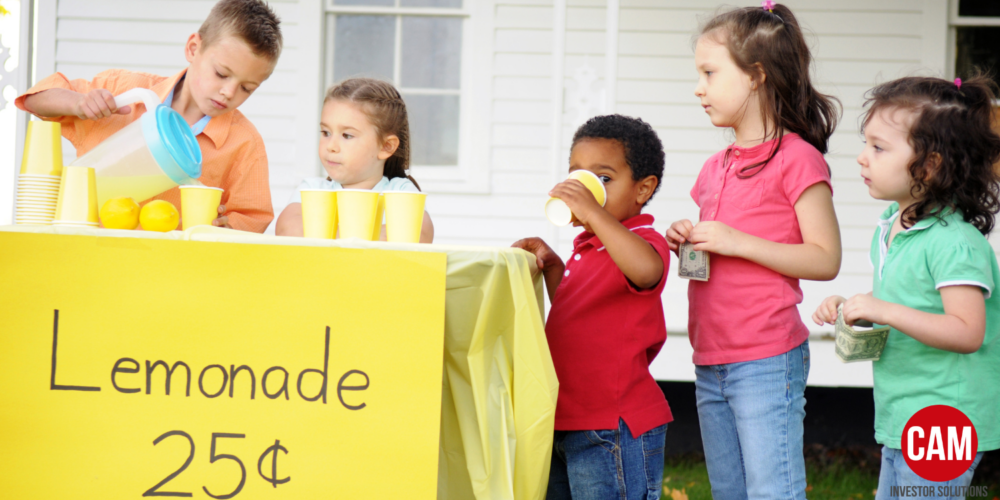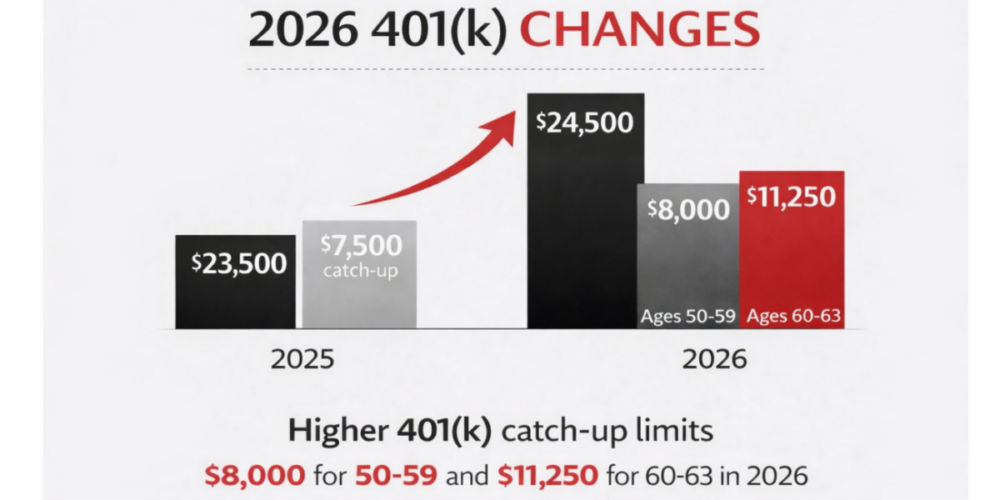Tax saving strategies 2026 go far beyond higher 401(k) limits. For…

Cultivating Financially Savvy Kids
Guest post by Hal Hershfield, Ph.D. – consultant to Avantis Investors
I recently had an experience that may be relatable to a lot of people who have thought about their own money, their kids’ money, or their clients’ money. For the last two July 4th weekends, my father-in-law has helped our children set up a lemonade stand in town.
This year, my kids earned about $250. They might be too young to discuss revenue versus profit, and we still haven’t paid my in-laws back for the raw materials, so let’s just pretend this is all profit. In trying to figure out what to do with the money earned, we’ve adapted the spend/save/give approach. The kids get to pick a charity to which they can donate some of the money they’ve earned, save another portion of the money for their future selves, and spend a smaller amount of the lemonade/cookie cash on something that they want. A current contender, at least for my son, is a small Lego® set.
I was trying to explain the idea that when it comes to spending and saving, there are trade-offs afoot. But nothing was really working the way I was hoping. My kids are 5 and 8, in case that’s relevant. This overall experience got me thinking: Is there a research-backed way to encourage kids to save more? And maybe just as important: Is there anything we can learn from nascent developmental psychology research that can be applied to adults as well?
Insights from Developmental Psychology: Encouraging Young Savers
As it turns out, there are two new forthcoming papers that hit on just these questions.
One of them, by Ege Kamber and her colleagues, had over 250 3-, 4-, and 5-year-olds play a Saving Board Game. The kids were able to earn tokens that they could use right away to get a smaller prize or save up to get a larger one after the game was over.1
The researchers tried a host of strategies that have proved successful with adults. For instance, they had the kids keep a budget, track their use of tokens, and take the perspective of a “grownup” who was playing the game. But compared to a control condition, none of these strategies seemed to have an impact.
Two things did matter, though. First, the older the kids, the more they saved (5-year-olds, not surprisingly, were better at delaying gratification than 3-year-olds). Second, regardless of age, parents who reported that their kids had higher tendencies to save at home (for example, putting money into their piggy banks) had kids who seemed to save more on the Saving Board Game.
One thing to note about this particular project: Kids were learning to save with tokens. That is, a little board game token was representative of a toy that a child could receive later. To some extent, the same is true for the dollars and cents that sit in our bank accounts. They are representative of the necessities and luxuries that we can buy now or later. But this level of abstraction might be a bit too much for kids (and adults, too!), lessening the effectiveness of the strategies that the researchers used.
Contrast that work with the second forthcoming paper, in which spending and saving were less abstract. In this one, Jinyi Zhang, Kathleen Vohs, and Stephanie Carlson had 4-year-olds play a version of what’s known as the “marble game.”2
I love this task that was developed by Christina Atance and Jennifer Metcalf years ago: Kids are given a few marbles and taken into one room with a little marble game in it. There’s a chute in which the kids put the marbles, and down the marble travels into a locked black box. Then, the kids are taken into another room with a much bigger marble game that has lots of chutes.
It’s kind of the kid version of “You can spend your money on something that you want right now, OR you can wait and save it for something bigger (and better?) later.” With each marble, kids can decide if they want to play the smaller game right now or wait and save it for the bigger, cooler game later.
To try to change saving behavior, here’s what Zhang and her colleagues tried out:
Positive simulation:
Some kids were asked to think about how happy they’d feel in the future if they saved the marbles for the bigger game. They were even shown four little images of smiley faces that ranged from mildly happy to very happy. Once they picked one of the images, the researchers placed that face on a board in front of the kids as a reminder of when they made their “saving” decision.
Negative simulation:
Same thing, except kids were asked to think about how sad they’d feel if they didn’t save their marbles. Here, kids picked a negative, frowny face to represent how they’d feel, and those pictures were placed on a board in front of them when they made their saving decision.
There were also two “control” groups where kids were asked to think about either a positive routine (their parents reading them a fun bedtime story after their nightly routines) or a negative routine (their parents saying no to another bedtime story after their nightly routines). Kids in these groups also got to pick a smiley or frowny face. The face was placed in front of them as they made their decisions.
The Power of Positive Future Simulation in Children’s
Savings
So, what worked? The kids who simulated their feelings in the future ended up saving more marbles than the ones who didn’t think about their future feelings. In fact, they were about 3.5 times more likely to save. About 60% of kids in the simulation groups saved at least one marble, compared to about 20% in the routine groups.
But you know how we often tell our kids to think about how bad they might feel in the future if they break something or hurt someone else’s feelings? Well, it turns out that simulating negative feelings was a lot less effective than simulating positive feelings! The kids who thought about how happy they’d be in the future if they saved their marbles were about twice as likely to save than the kids who thought about how sad they’d feel if they didn’t save.
Shifting the Savings Conversation: From Negative
Consequences to Positive Outcomes
There’s a host of other work that has explored saving strategies for children, but in just taking these two papers, a few lessons and questions arise:
- Saving can be abstract. Perhaps moving away from a mindset of “smaller amounts of money now versus larger amounts of money later” could be a good idea. Instead, one could focus on concrete material and experiential goods now and later.
- At least for young kids, spotlighting the negative impacts of not saving didn’t move the needle as much as spotlighting the positive feelings that arise from going through the act of saving.
To what extent, I wonder, when we try to motivate ourselves, our kids, or our clients to save, do we speak of the negatives of inaction versus the positives of action? Could shifting the balance of that conversation a little more to the positive side make a difference?
It’s something I’m actively trying at home right now, but only time will tell if there’s a bigger Lego® set in the distant future or a smaller one right now.
Source Disclosure
Source: Avantis Investors, Hal Hershfield, Ph.D.
1 Ege Kamber, Madi K. Maguire, and Edyta K. Tehrani, et al., “The impact of strategies on young children’s saving for the future,” Journal of Experimental Child Psychology 246 (October 2024): 105995.
2 Jinji Zhang, Kathleen D. Vohs, and Stephanie M. Carlson, “Imagining the Future Improves Saving in Preschoolers,” Journal of Experimental Child Psychology 246 (October 2024): 105966.
CAM Disclosure
M & A Consulting Group, LLC, doing business as CAM Investor Solutions is an SEC registered investment adviser. As a fee-only firm, we do not receive commissions nor sell any insurance products. We provide financial planning and investment information that we believe to be useful and accurate. However, there cannot be any guarantees.
This blog has been provided solely for informational purposes and does not represent investment advice. Nor does it provide an opinion regarding fairness of any transaction. It does not constitute an offer, solicitation or a recommendation to buy or sell any particular security or instrument or to adopt any investment strategy.
Past performance is not a guarantee of future results. Diversification does not eliminate the risk of market loss. Tax planning and investment illustrations are provided for educational purposes and should not be considered tax advice or recommendations. Investors should seek additional advice from their financial advisor or tax professional.



